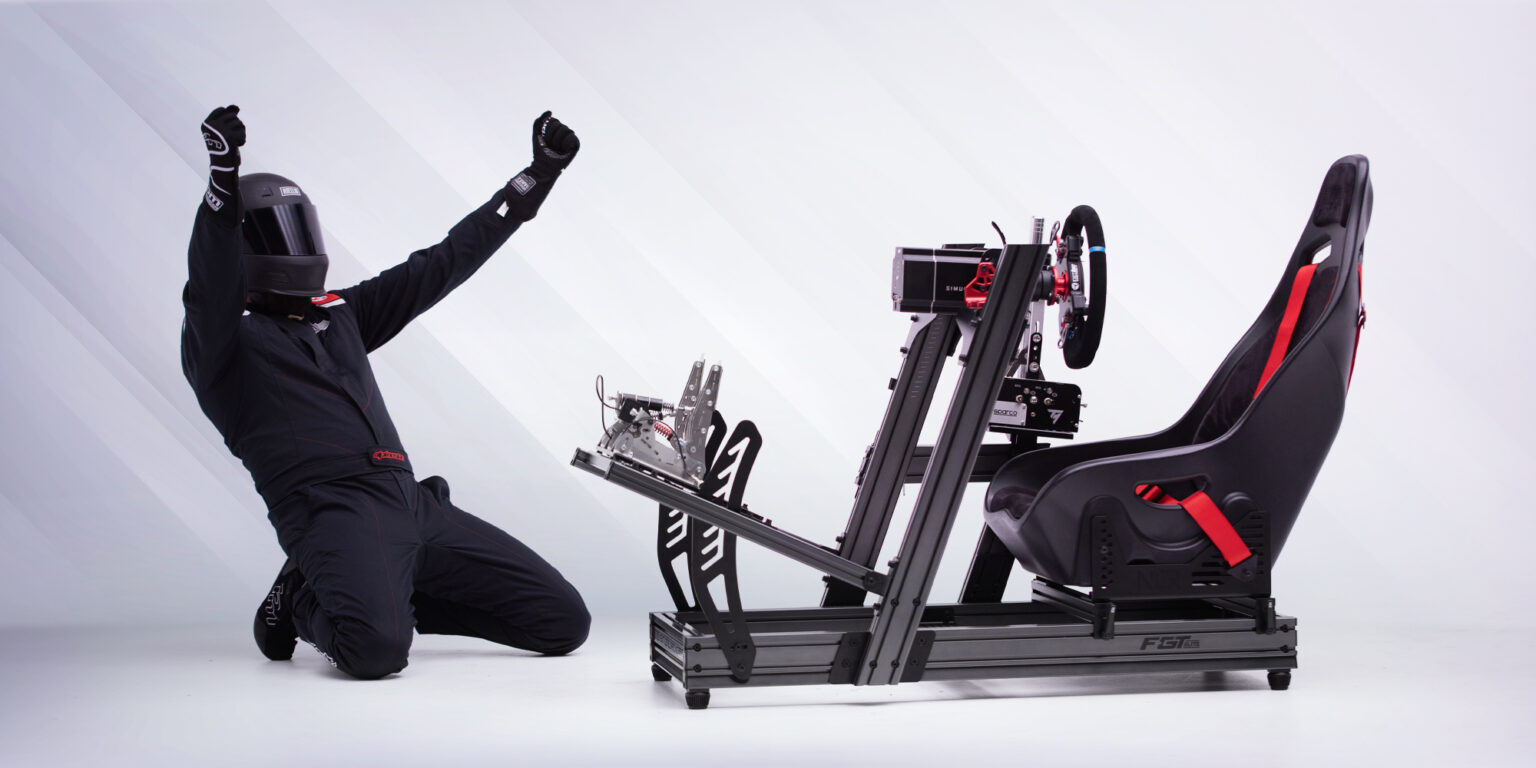World’s #1 Racing & Flight Cockpit Brand

Racing simulators have evolved from niche gaming accessories to essential components of any serious racing enthusiast’s setup. With advancements in technology, accessibility, and affordability, creating a realistic racing experience at home has never been easier. However, with a multitude of options available, choosing the right racing simulator for your home can be overwhelming. In this comprehensive guide, we’ll explore the key factors to consider when selecting a racing simulator that suits your needs, space, and budget, ensuring an immersive and thrilling racing experience right in the comfort of your home.
Understand Your Needs and Preferences: Before diving into the world of racing simulators, take some time to assess your needs and preferences. Are you a casual gamer looking for occasional racing fun, or are you a dedicated enthusiast seeking a high-fidelity simulation experience? Consider factors such as your gaming habits, space availability, budget, and desired level of realism to guide your decision-making process.
Determine Your Budget
Racing simulators come in a wide range of price points, from budget-friendly options such as the Next Level Racing® Wheel Stand 2.0 to premium setups that can cost thousands of dollars. Establishing a budget upfront will help narrow down your options and prevent overspending. Consider allocating funds for essential components such as the racing cockpit, steering wheel, pedals, and other accessories, while leaving room for potential upgrades in the future.
Choose the Right Platform
Selecting the appropriate gaming platform is crucial when building your racing simulator setup. Decide whether you prefer PC, PlayStation, Xbox, or a multi-platform compatible system. Each platform offers its own exclusive titles, features, and compatibility with hardware peripherals. Choose a platform that aligns with your gaming preferences, existing hardware, and budget constraints.
Research Simulation Software
The simulation software serves as the backbone of your racing simulator, dictating the realism, graphics quality, available tracks, and cars. Research different simulation software titles such as Assetto Corsa, iRacing, rFactor 2, Project CARS, and the F1 series to determine which best suits your preferences and platform compatibility. Consider factors such as online multiplayer capabilities, mod support, and community engagement when making your decision.
Consider Space Constraints
Assess the available space in your home to determine the size and layout of your racing simulator setup. Consider factors such as room dimensions, furniture placement, and accessibility when choosing a location for your simulator. Opt for a foldable and collapsible racing cockpit design if space is limited such as the Next Level Racing® GTLite Pro for easy storage when not in use. Next Level Racing® has a range of foldable cockpits and wheelstands that are fantastic for the entry-level setup.
Evaluate Racing Cockpit Options
The racing cockpit serves as the foundation of your simulator setup, providing stability, comfort, and immersion during gameplay. Evaluate different cockpit options based on factors such as construction materials, adjustability, compatibility with your chosen platform, and available accessories. Consider features such as seat sliders, mounting brackets, and cable management to enhance convenience and customization options. Next Level Racing®’s Elite-series range of aluminium profile cockpits are modular and have a range of accessories for upgradability in the future.
Choose Quality Steering Wheels and Pedals
The steering wheel and pedals are essential components of any racing simulator, directly impacting the feel, precision, and immersion of the driving experience. Invest in a quality steering wheel with force feedback technology, realistic feedback, and customizable settings to simulate different driving conditions accurately. Similarly, choose pedals with progressive resistance, adjustable pedal faces, and a realistic brake feel for enhanced realism and control.
Explore Motion Systems (Optional)
For the ultimate level of immersion, consider incorporating a motion system into your racing simulator setup. Motion systems simulate the feeling of acceleration, deceleration, cornering, and bumps, providing a more realistic and dynamic driving experience. Evaluate different motion system options such as seat movers like the Next Level Racing® Motion V3, motion platforms like the Next Level Racing® Motion Plus for Pitch and Roll, or the Next Level Racing® Traction Plus Platform for Slip and Yaw, and motion simulators based on factors such as degrees of freedom, compatibility, and budget.
Enhance Audio and Visuals
Audio and visual enhancements play a significant role in the overall immersion and realism of your racing simulator experience. Invest in quality audio equipment such as gaming headphones, surround sound speakers, or dedicated racing simulator audio systems to fully immerse yourself in the sounds of roaring engines and screeching tires. Choose a display setup that suits your preferences and budget, whether it’s a single monitor, triple monitor setup, ultra-wide monitor, or VR headset, ensuring an immersive field of view and crisp visuals.
Seek Recommendations and Reviews
Before making a final decision, seek recommendations and read reviews from fellow racing enthusiasts, gaming forums, and reputable online sources. Next Level Racing® has our own Owners Page and Discord, which gives our community a chance to come together to share their setups and recommendations. Real-world user experiences can provide valuable insights into the performance, reliability, and overall satisfaction with specific racing simulator setups, helping you make an informed decision that meets your expectations and requirements.
Conclusion
Choosing the right racing simulator for your home requires careful consideration of various factors, including your gaming preferences, budget, platform compatibility, space constraints, simulation software, racing cockpit design, steering wheel and pedals, motion system options, audio and visual enhancements, and user recommendations. By taking the time to evaluate these factors and make informed decisions, you can create a customized racing simulator setup that delivers an immersive, realistic, and exhilarating driving experience right in the comfort of your home.

Founded in 2009, next level racing has revolutionized the simulation industry with its unwavering commitment to innovation and unique design. As a multiple award-winning company, we have always aimed to provide our customers with the most realistic and immersive racing and flight simulation experiences.